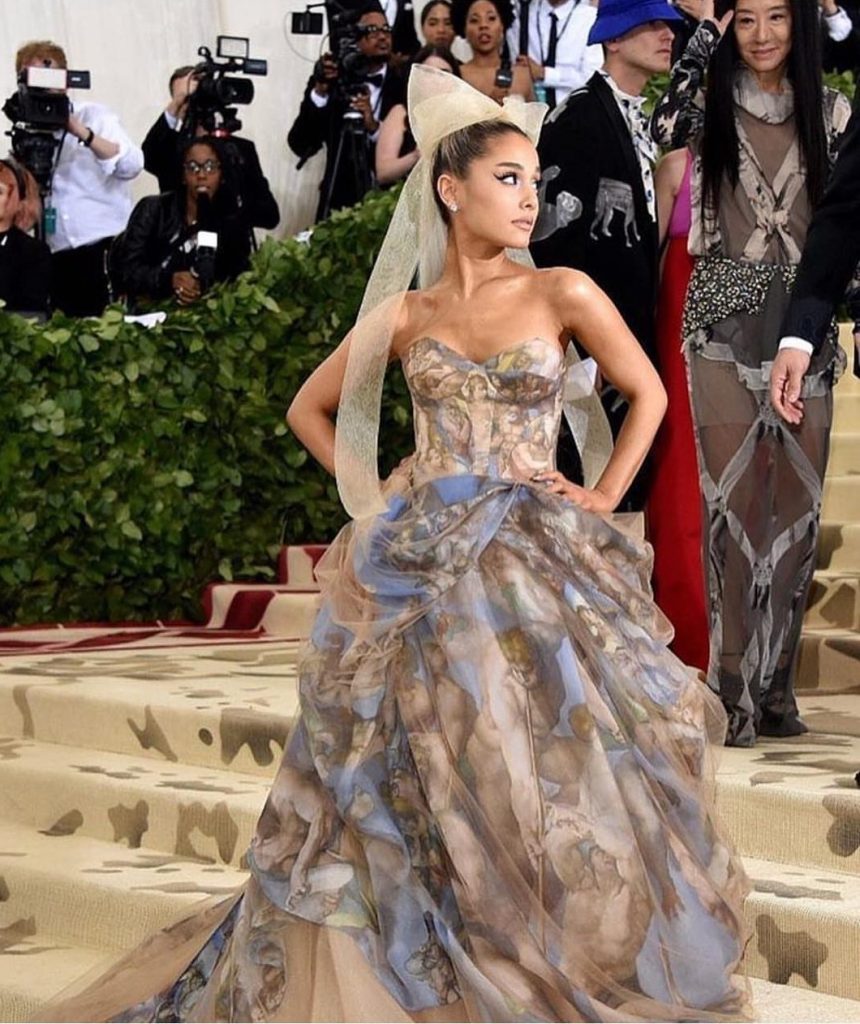by Hajra Tahir
The recent extinction of the Blue Spix Macaw is a jarring reminder of the detrimental consequences of climate change. In 2015 Greenhouse Gas emissions from textile productions alone, produced an extortionate 1.2 billion tonnes of Carbon Dioxide. China’s target of reducing emissions from the textile industry by 1651 million tonnes (in order to cut the production of greenhouse gases per unit of GDP by 2020), has proven futile in countervailing global warming, and has since added to these numbers. It is not difficult therefore, to form a link between the fashion industry and the deterioration of our planet. However the discussion can be further extended by considering how the vogue for ‘speedy style’ originates from the rolling hills of Hollywood itself. The most recent examples of this are the Cannes Film Festival and the Met Gala.
The Cannes Film Festival
The Cannes Film Festival, is an exclusive 2 week affair in which films from all genres as well as documentaries are previewed on the French Riviera, South- East France. The Met Gala, similarly exclusive, is a themed costume ball held annually on the first Monday of May at the Metropolitan Museum of Art’s Costume Institute in New York City. Both events host the most sought after stars on the planet who showcase their designer gear on the red carpet. Although it is difficult to see how these two events are linked to the environmental damage we are experiencing today, their underlying effects on retailers and fashion businesses around the world can help explain the matter.

The above image is of Ariana Grande at last year’s Met sporting a silk organza Ball gown designed by Vera Wang, depicting Michelangelo’s ‘The last Judgement’ painting as seen in the Sistine Chapel altar wall. A mouthful to say but a delight to look at, I’m sure most of us (myself included) can’t help but gush over this extravagant fit. That being said, it is responses such as these that encourage our high street retailers to emulate said designs and make them affordable for the everyday consumer.

The image above is a suspiciously similar more casual rendition of the cherub-inspired garment, that is now available literally everywhere. The use of social media has further enhanced the Hollywood influence as online platforms such as Instagram, Youtube and Twitter make coverage of these annual jamborees more accessible and interactive.
People have taken to social media to express opinions and engage with the most talked of events of the year.


Our insatiable demand for new clothing and designs, is derived from unconsciously being influenced by the stars on the big screen. This is obviously not a ground breaking conclusion – for decades now the entertainment industry has been a major contributor to fluctuating trends. However, the underlying issue revolves around the sheer amount of damage our unending consumerism is causing. Fashion, a dispensable luxury, is amongst Petroleum, Mineral Transformation, Transport and Agriculture as one of the most prominent suppliers of surplus Greenhouse emissions. Whilst sustainable alternatives are being researched and introduced for the latter, it is unclear how we can temper the effects of the fashion industry on our planet. Perhaps this lack of initiative is due to our own jaded disposition as passive consumers – who show little to no rage at the deteriorating condition of our Earth when it comes to foregoing our entrenched interests in pop culture. Equally, lack of sustainability in the industry may also stem from a deficit of ideas when it comes to transforming the very nature of an inherently unsustainable business.
The ‘out with the old, in with the new’ mentality is very much inspired by our incessant interest in ongoing trends that have Hollywood origins. Exactly how much damage this is causing is nicely summarised in the video below.
As well as influencing the pace at which textile industries pump out Hollywood inspired clothing, those attending events such as the Met Gala are notoriously high maintenance. The tweet below is just one radical example of this.

To contextualise this, the average private jet burns more greenhouse gases in a single trip than the average American does in a whole year. But at least there is solace in knowing that Kim was able to complete her latex couture look with her press on plastic nails.
The Cannes Film Fare Festival is no better. 1200 additional tonnes of waste is deposited into French landfill throughout the duration of the festival, not including the 200 x 2 metre red carpet that is changed 3 times a day throughout the duration of the 2 weeks. Star studded Hollywood personalities adorned in their unethically sourced designer garments also triple the carbon footprint of the area when the festival is in operation. This is mostly due to the inordinate consumption of vast amounts of fuel by SUVs, Sedans, Rolls Royces and Limousine escorts hat Chauffeur the stars to the venue – adding to the grandeur of their fashionable entrances to the festival. An insight into the aftermath of all this is shown in the below video.
The influence of Hollywood on fashion is causing a major disturbance to ecosystems around the planet and somehow needs to be countered in the upcoming years to stop the impending climate catastrophe. Ways of making landmark events such as Cannes and the Met sustainable in their capacity should also be implemented – if anything, an ethical example needs to be set for the millions that are closely following the coverage.
Hajra is in the first year of her undergraduate Law with Politics degree at the University of Manchester. With an interest in international relations, literature and travelling she aims to hopefully supplement her future career as a city lawyer with pro-bono work and an involvement in civil and human rights.


